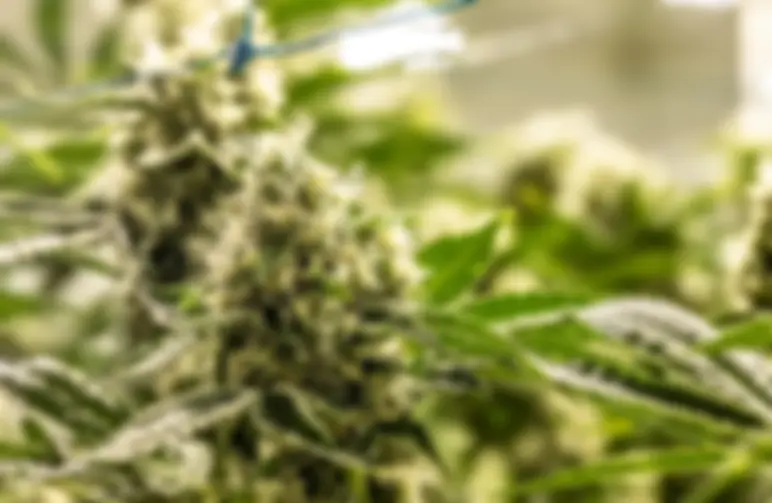Many growers have heard that autoflowers produce smaller buds than other varieties, but this is something of a myth. The good news is that with the right care, autoflower buds can grow nice and big, and sometimes even larger than Sativa's and Indica's.
For many years, autoflowering strains of cannabis were notably small compared to other varieties and did not produce great yields, but nowadays, this is no longer the case.
If you select the right autoflower strain for your requirements and take care of it properly, you can grow impressively large buds with great ease and enjoy super harvests. Follow our weed-growing tips, and you will be able to maximize your autos in terms of taste and yield.
11 tips to get bigger buds on autoflowers
Autoflowers thrive indoors and outdoors, blooming in midsummer when sunlight is most intense. Unlike photoperiod plants, they flower independently of light hours, requiring adjusted cultivation.
A great yield depends on size, as their short lifecycle makes the vegetative phase critical. Autoflowers are genetically programmed for rapid, explosive growth.
1. Never repot
Autoflowers are not too fond of repotting. They simply have more important things to do with their limited time than recovering from a transplant. Don't put it on your autoflower, and be very careful of topping for the same reason. It is advisable to keep your autos in the same pot until harvest.
2. Choose a nice, large pot
It's much better to choose one that is too big than one that is too small. Give your autoflower room to grow, as even a compact strain needs plenty of room to develop a good root system. Don't go for less than an 11-liter tub.
3. Select an airy growing medium
Auto roots prefer to have less resistance and will grow much more quickly in an airy medium. Coconut coir is perfect, but since coconut has a tendency to dry out quickly, the smart grower adds a good amount of perlite to it. An autoflower will quickly get started with a 50-50 blend of coconut and perlite.
4. Prevent overwatering
Never give too much water, as too much water slows down the growth that an autoflower needs so much.
5. Do not feed at the start of the growth phase
To encourage rapid root growth, do not feed until the plant has developed four nodes. When you start feeding, apply a low dose and increase it gradually.
6. Do not give bloom fertilizer until the autoflower stops growing
To get the most out of the short growth phase, you should continue to give growth fertilizer until the plant really stops growing. The autoflower will have already started flowering by then because it starts after about 21 days.
The growth of an autoflower with a cycle of about 10 weeks will only stop after about 6 weeks. Until then, give a growth nutrient.
7. Go for good autoflower genetics
When growing autoflowers, start with quality genetics from a trusted seed company like WeedSeedsExpress. Their strains are carefully bred for robust plants and solid yields.
Check reviews and grow reports to find strains that perform well for others. For small spaces, opt for compact varieties like Lowryder. With ongoing breeding advancements, you can choose from a diverse range of Sativas, Indicas, and CBD-rich hybrids.
Selecting proven genetics is key to a successful harvest.
8. Go for a sea of green setup
If you intend to optimize your harvest per meter square, it is undoubtedly worthwhile to train your autoflowers using the SOG method.
9. Optimal environmental conditions
Maintaining optimal environmental conditions and avoiding large temperature fluctuations is essential if you want to increase yields. Cannabis thrives in daytime temperatures of 20-28 °C.
The temperature should not fall below 15 °C during the night. This applies to the entire cannabis life cycle, with a few exceptions in the case of cold-resistant strains.
10. Make sure the pH is balanced
The pH must be appropriately adjusted to allow the roots of the female cannabis plants to absorb nutrients effectively. You will never harvest juicy, big, fatty colas if your pH is incorrect. Hydro and coconut growers maintain 5.5-6.0. Soil is a bit more forgiving and will tolerate a pH of up to 6.5. Invest in special pH nutrients or a pH meter. Don't gamble and adjust the pH value every time.
11. Take care with the lighting
T-Neon lamps are excellent for autoflowers, with growth-spectrum options and lumen adjustments as plants develop. LEDs are also ideal, offering adjustable colors for different stages and energy efficiency.
Home growers typically use 400W or 600W lamps in a 1.2 x 1.2 x 1.2 m tent. For autoflowers, an 18/6 light cycle is standard throughout the lifecycle, unlike the 12/12 flowering schedule for photoperiod strains.
.Avoid upgrading to 1000W HPS lamps, as they generate excessive heat and risk burning plants without boosting yields. Modern LED systems are a better investment, consuming less power and lasting up to ten years, making them both efficient and durable.
What should I do if my autoflower buds have stopped growing?
If your buds have stopped growing, it could be because they have a nutrient block. If you suspect this may be the case, you will need to give your plants a flush.
Gently loosen the growing medium around the roots first, perform the flush, and then leave for a couple of days with no water to allow oxygen to get to the roots. This will hopefully get your plants restarted.





